Volcanoes have long captured the human imagination with their raw, destructive power and awe-inspiring natural beauty. While hundreds of active volcanoes dot the globe, only a handful are easily accessible and officially open to visitors willing to take the risk. Here are the top 12 active volcanoes worldwide that adventurous travelers can explore:
Mount Etna, Italy
Located on the eastern side of Sicily, Mount Etna is one of the world’s most active volcanoes and an ever-present part of the Sicilian landscape. At 10,925 feet (3,330 meters) tall, this stratovolcano has been erupting for half a million years, with its most recent eruptive episode occurring in February 2023.
Visitors can get remarkably close to Mount Etna by taking guided tours that bring you to the edge of the main crater or traversing the striking landscapes formed by historic lava flows. Popular activities include hiking, guided summit tours, off-road adventures, and scenic drives around the volcano’s base. The nearby town of Taormina offers prime views of Etna’s frequent puffs of smoke.
For the latest updates on Mount Etna’s activity, check the Istituto Nazionale di Geofisica e Vulcanologia (INGV) website: [http://www.ct.ingv.it/en/]
Mount Yasur, Vanuatu
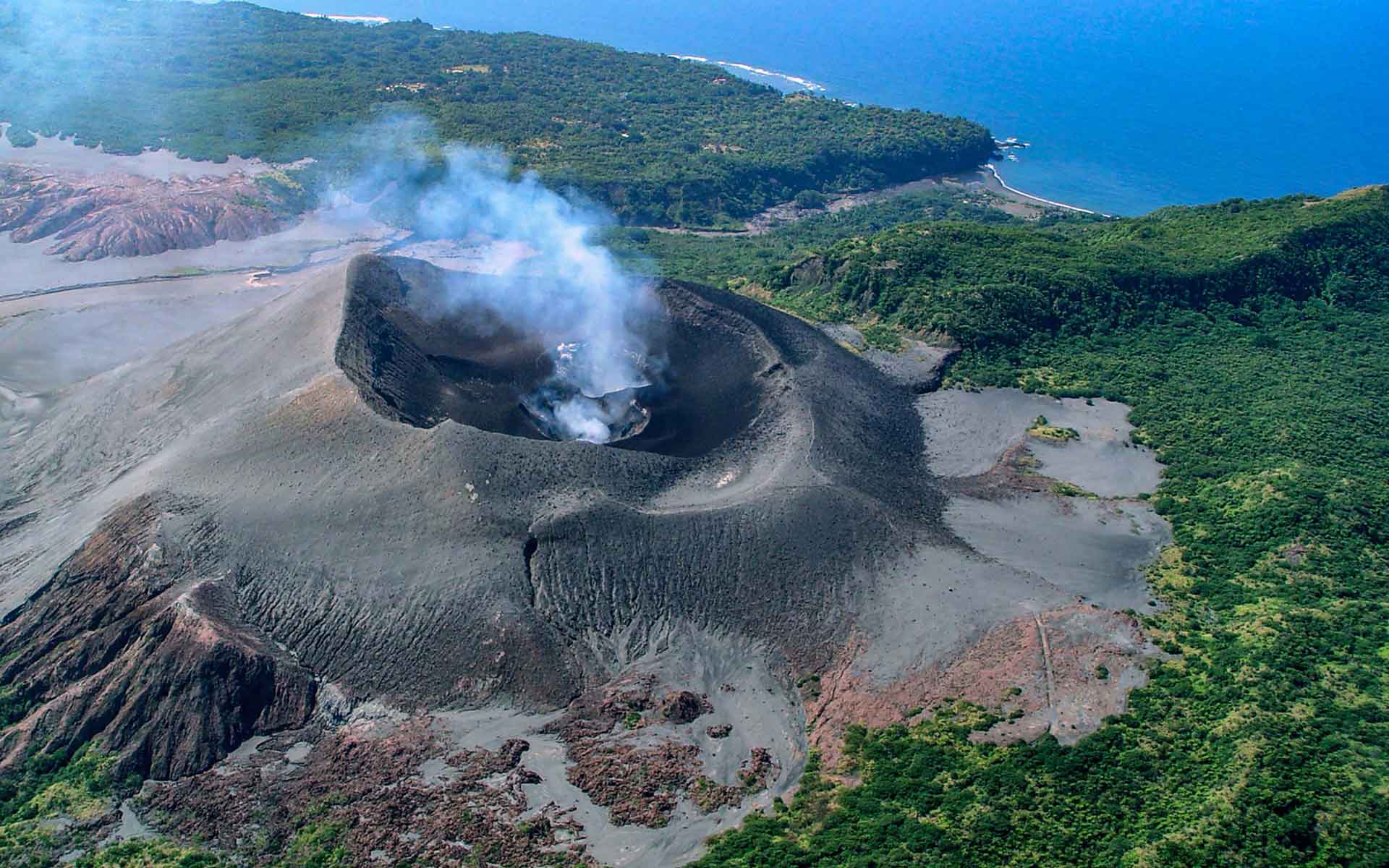
Located on Tanna Island in the remote South Pacific nation of Vanuatu, Mount Yasur ranks among the world’s most accessible active volcanoes. This 1,184-foot (361-meter) cinder cone has been continually erupting for over 800 years, sending a spectacular shower of glowing lava and volcanic bombs into the air every few minutes.
Visitors can take guided tours right up to the rim of Yasur’s active crater, where they’ll be treated to an incredible up-close view of the eruptions against the backdrop of the South Pacific sunset. Many tours operate from nearby villages and allow interactions with the local communities deeply connected to the volcano.
Check Vanuatu’s meteorology and geohazards department for updates: [https://vm.obsmolu.gov.vu/]
White Island, New Zealand

Off the coast of New Zealand’s North Island lies White Island, one of the country’s most active volcanos and a hotbed of geothermal activity. Despite a deadly eruption in December 2019 that killed 22 people, the uninhabited island reopened to visitors in 2022 after being deemed safe enough for tours to resume.
From the port of Whakatane, boat tours take visitors across the Bay of Plenty to White Island’s crater rim, where they can observe the roiling mud pools, shooting geysers, and dramatic gas plumes up close. Activities include guided walks across the island’s unique volcanic landscapes.
Stay updated on conditions at White Island through the GeoNet volcanic alert system: [https://www.geonet.org.nz/volcano]
Mount Bromo, Indonesia
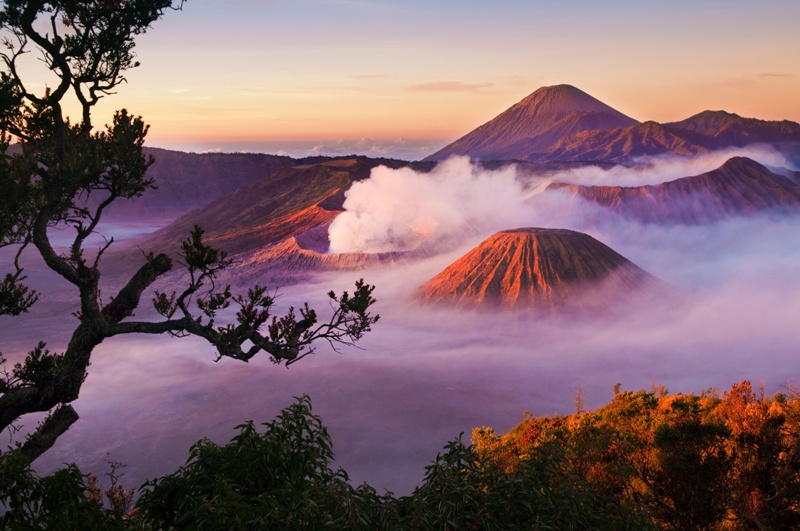
Part of the iconic Tengger Caldera in East Java, Mount Bromo is a small but mighty volcano that has been perpetually active for centuries. While relatively placid these days, Bromo is still capable of hurling ash and volcanic materials over a thousand feet into the air.
The entire Bromo Tengger Semeru National Park area is a highlight for visitors to Java, who come to take in the otherworldly vistas of Bromo’s barren, undulating landscapes. It’s possible to walk right up to the rim of the volcano’s inner crater and witness the smoldering, steaming caldera up close. Guided hikes and legendary sunrise views from nearby vantage points are also popular draws.
The Pusat Vulkanologi dan Mitigasi Bencana Geologi [Center for Volcanology and Geological Hazard Mitigation] tracks volcanic activity for Bromo: [https://vsi.esdm.go.id/index.php/gunungapi/data-gunungapi/582]
Masaya Volcano, Nicaragua
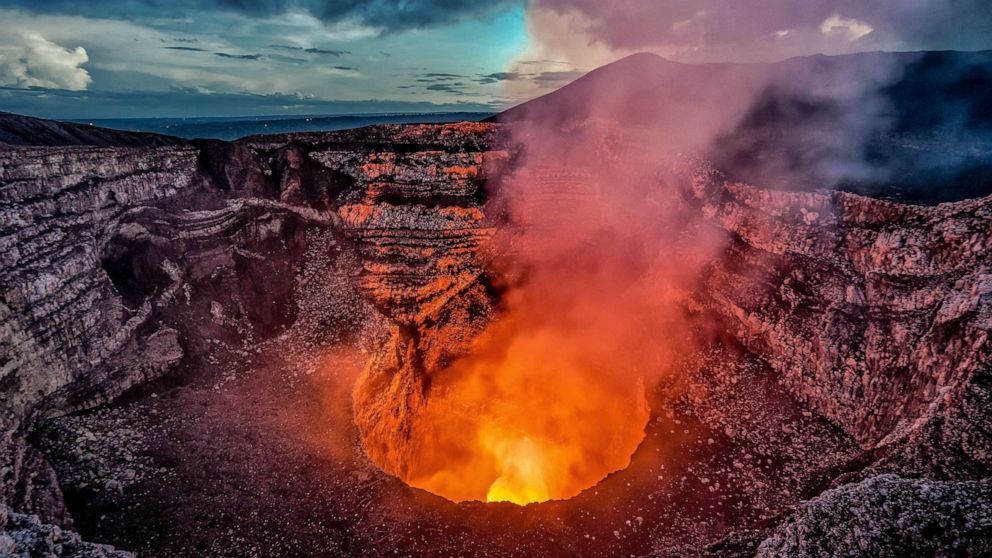
The Masaya Volcano near Managua, Nicaragua, is one of the few volcanoes in the world where visitors can drive right up to the rim and peer directly into an active lava pit. Part of the mammoth Masaya Caldera, this volcano has been intermittently active for over 6,000 years and remains a sacred site steeped in folklore for many indigenous communities.
At the Masaya Volcano National Park, visitors can park adjacent to the Santiago crater and gaze into the fiery, glowing magma lake that constantly roils and bubbles. Just be sure to heed all safety warnings, as sudden gas emissions can occur without notice. Evening tours allow for especially stunning views of the molten lava pit contrasted against the night sky.
Nicaragua’s volcanic monitoring is handled by INETER: [https://www.ineter.gob.ni/vulcanologia/]
Mount Ijen, Indonesia

The brilliant blue flames of Mount Ijen have earned this active crater in East Java the moniker of “The Blazing Fury.” The volcano’s turquoise sulfuric lake and eerie blue fire crater make for a surreal sight that draws visitors from around the world.
To experience Mount Ijen up close, you’ll need to embark on a strenuous overnight hike that brings you to the crater’s edge around 1 AM. From there, you can witness the electric-blue flames caused by high levels of combustion of sulfuric gases—a phenomenon unique to this volcano. Day hikes across the flanks of the volcano and along the shores of the acidic crater lake are also available.
As with other Indonesian volcanoes, activity updates come from the Center for Volcanology and Geological Hazard Mitigation: [https://vsi.esdm.go.id/index.php/gunungapi/data-gunungapi/197]
Mount Merapi, Indonesia

Mount Merapi is the most active volcano in Indonesia and a constant presence looming over the cities of Yogyakarta and Solo in Central Java. One of the world’s most dangerous volcanoes, Merapi is known for its frequent explosive eruptions that have periodically devastated surrounding areas over the centuries.
Despite its hazards, adventurous travelers flock to Merapi to explore the scarred, barren landscapes sculpted by past eruptions. Jeep tours take visitors along rough paths carved into the volcano’s flanks, while more challenging hiking routes lead to historic lava fields and summits with panoramic views. But access is always contingent on Merapi’s activity levels and alert status.
Monitor Mount Merapi’s status through Indonesia’s Center for Volcanology and Geological Hazard Mitigation: [https://vsi.esdm.go.id/index.php/gunungapi/data-gunungapi/265]
Mount Kilauea, Hawaii
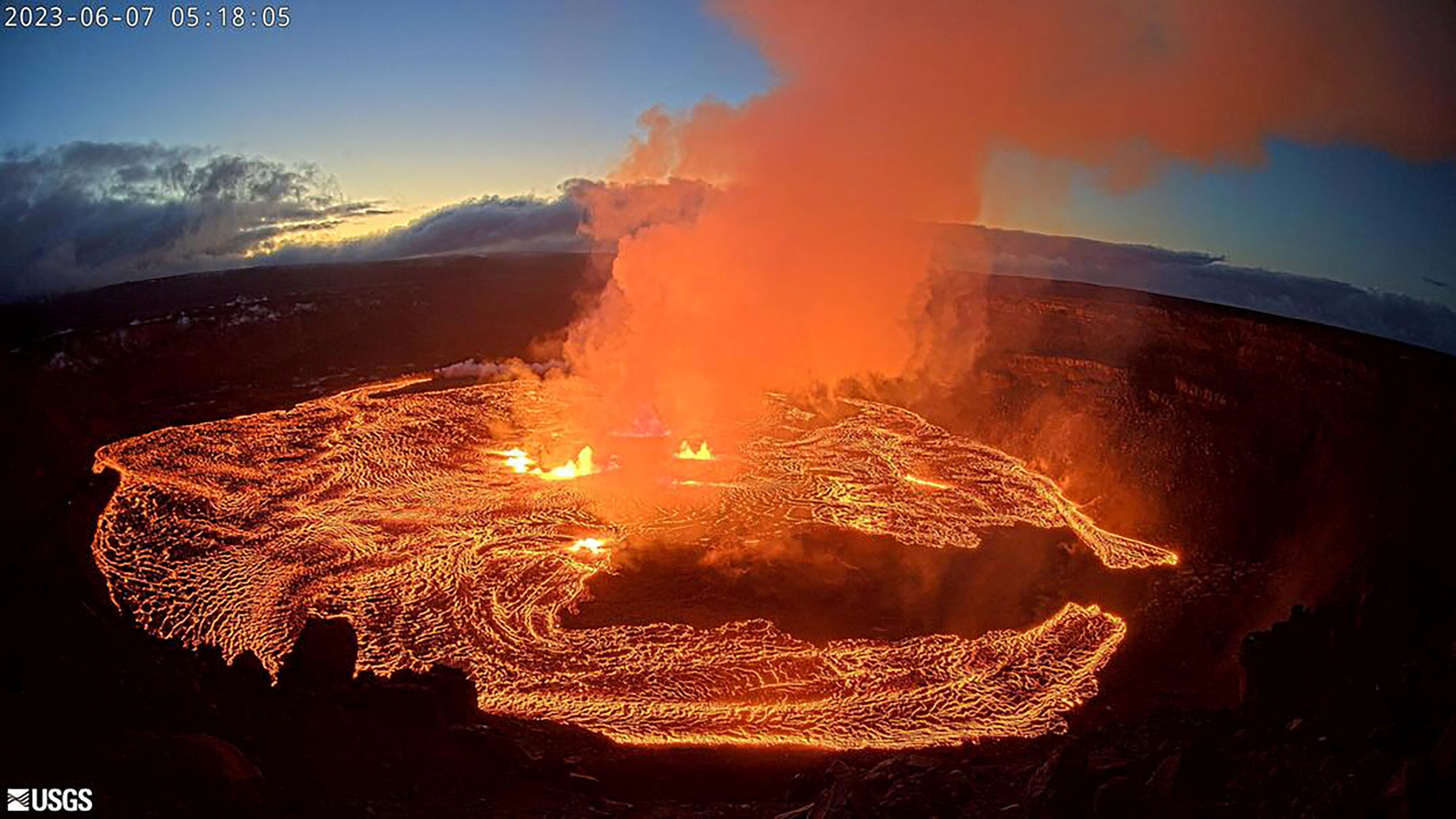
No list of visitable volcanoes would be complete without including Hawaii’s Mount Kilauea—one of the most active and mesmerizing volcanoes on the planet. Part of the Hawai’i Volcanoes National Park on the Big Island, Kilauea has been erupting almost continuously since 1983, treating visitors to a show of molten lava flows, billowing gas plumes, and hypnotic lava lakes.
While closed during particularly intense eruptive periods, the national park reopened sections of the crater rim in 2018, allowing visitors to once again observe the churning Halemaumau Crater from panoramic overlooks. Guided ranger hikes traverse the still-smoldering Kilauea Iki crater and other parts of the ever-evolving volcanic landscapes.
The USGS Hawaiian Volcano Observatory provides frequent updates on Kilauea’s status: [https://www.usgs.gov/observatories/hvo]
Ol Doinyo Lengai, Tanzania
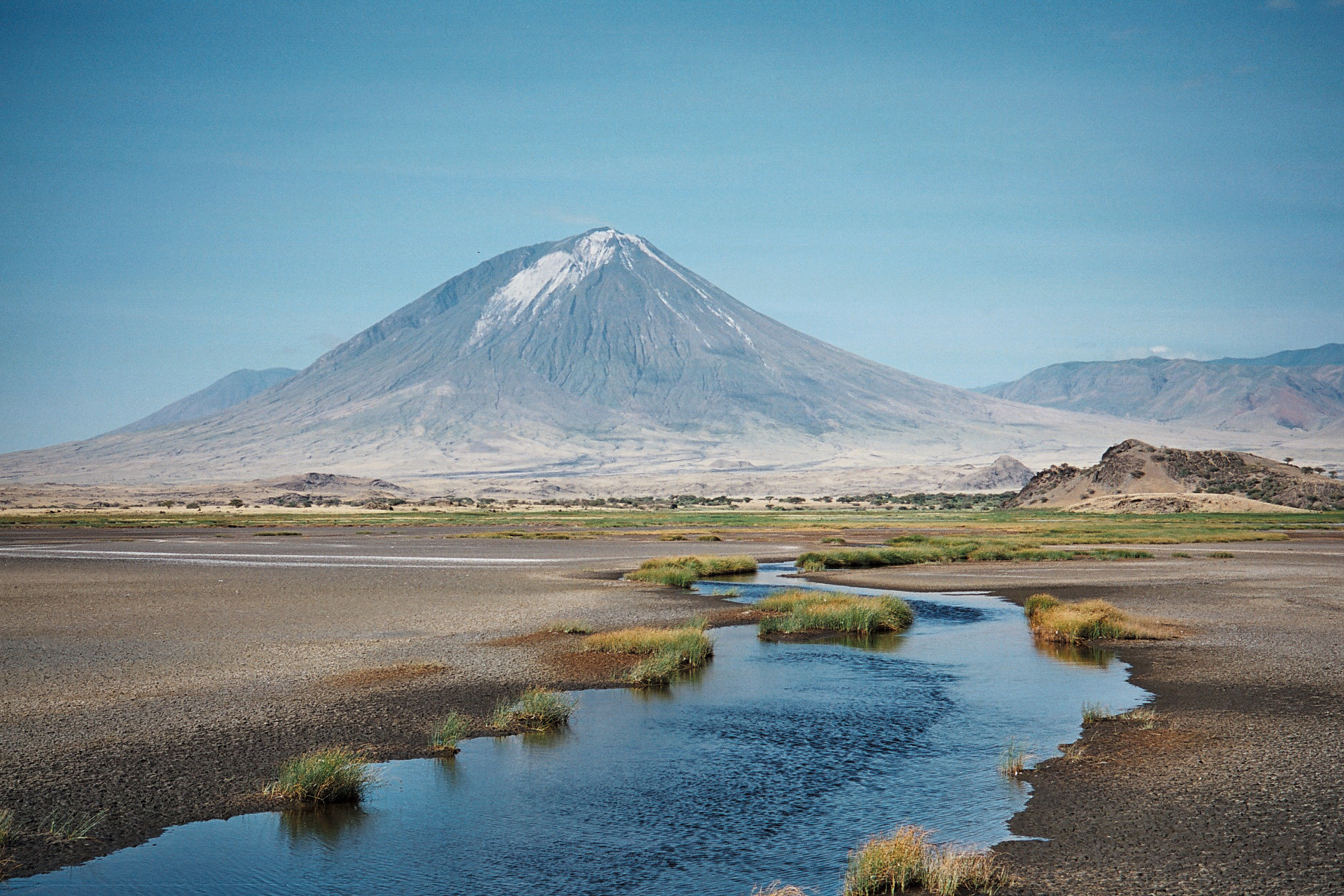
Situated in northern Tanzania near the Kenyan border, the remote Ol Doinyo Lengai is arguably the strangest volcano open to visitors. Unique for being the only volcano on Earth to produce natrocarbonatite lava (which appears black), Ol Doinyo Lengai has captured the fascination and imagination of scientists and explorers alike.
While hardly a towering peak at just under 10,000 feet, Ol Doinyo Lengai requires a rugged multi-day trek across the sun-baked East African savannah to reach its base. Once there, guided climbs allow adventurers to summit the crater rim and peer inside at the bizarre natrocarbonatite lava flows—an experience like none other on the planet.
You can find updates on this unusual volcano through the Smithsonian Institution’s Global Volcanism Program: [https://volcano.si.edu/volcano.cfm?vn=231001]
Mount Nyiragongo, Democratic Republic of the Congo

One of the world’s most remarkable and deadly volcanoes, Mount Nyiragongo may just take the prize for being Earth’s most terrifying mountain. Located in the conflict-plagued Democratic Republic of the Congo near the city of Goma, Mount Nyiragongo is best known for housing the largest lava lake on the planet within its gaping summit crater.
When stable enough for guided excursions, trekkers can take an overnight hike to reach the crater rim, where they’ll be treated to the astonishing sight of the bubbling, roiling lava lake contained within the towering pit. But the volcano is highly unpredictable and restless, and climbs are often called off due to increased gas emissions or seismic activity.
Stay updated on Nyiragongo’s volatile conditions through the Goma Volcano Observatory: [https://www.govoanr.org/accueil]
Villarrica, Chile
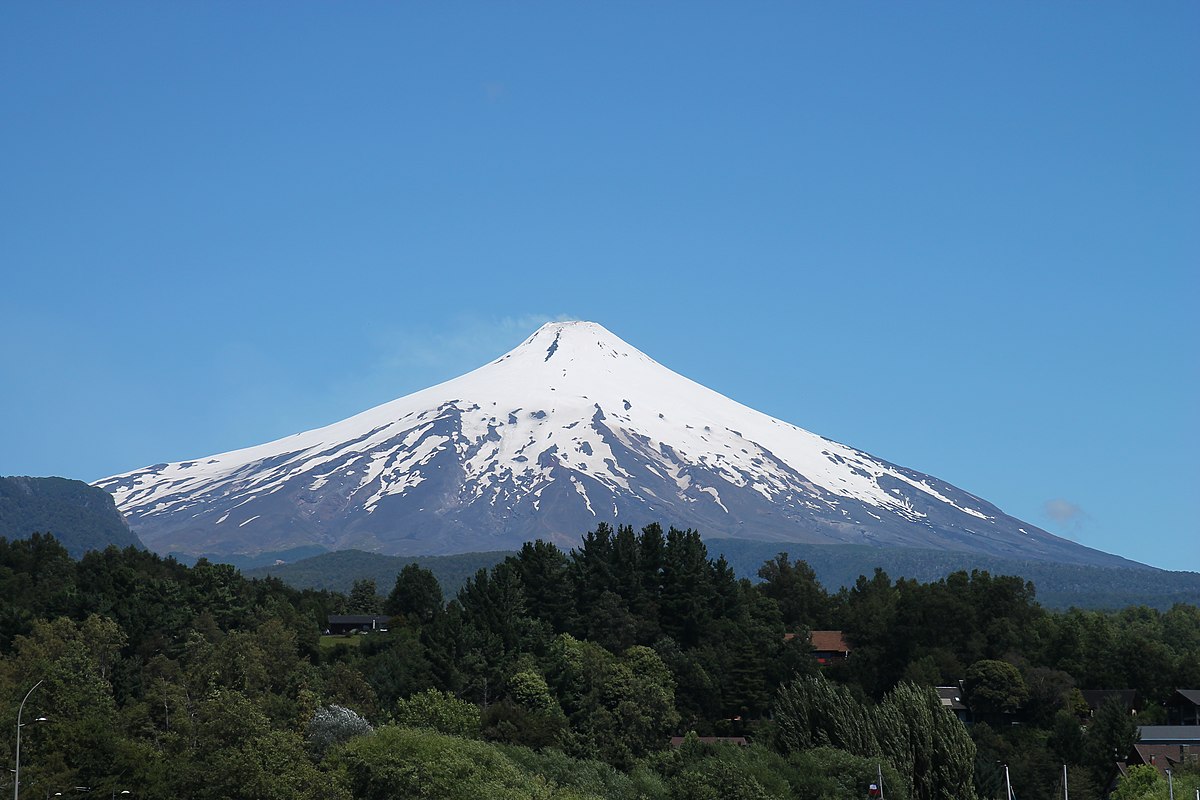
Towering over the lakes and forests of southern Chile, the snowcapped, perfectly conical shape of Villarrica has graced countless postcards and paintings. But this iconic Chilean landmark is also one of the country’s most active volcanoes—and one that happens to be open to summit hikes on a regular basis.
When conditions allow, guided climbs take hardy adventurers up Villarrica’s steep flanks towards the steaming, sulfuric crater perched at its 9,380-foot (2,860 meter) summit. From the crater rim, hikers can peer straight down into the smoldering lava pit while taking in views of the Villarrica Lake below—an exhilarating and unique volcanic experience.
Activity status for Villarrica comes from SERNAGEOMIN: [https://www.sernageomin.cl/volcanes/volcan-villarrica/]
Misti, Peru

Rising like a masive pyramid nearly 19,000 feet above Arequipa, Peru, the mighty El Misti volcano is a beloved icon of this colonial city and a favorite hiking destination among outdoor enthusiasts. Though its last major eruption occurred in 1985, Misti remains officially active—and climbs to its summit are open to experienced high-altitude trekkers.
The multi-day guided ascent leads from the arid foothills through diverse ecosystems before reaching the stark, windswept upper reaches of Misti’s summit crater. On a clear day, the top affords breathtaking panoramas over Arequipa and a potential glimpse into the depths of the volcano’s smoldering interior.
Peru’s Instituto Geofísico del Perú is responsible for monitoring Misti and other Peruvian volcanoes: [https://www.igp.gob.pe/servicios/centro-vulcanologico-nacional/]
While pushing the limits of adventure, visiting an active volcano is never without risk. Pay close attention to all safety guidelines, check regional volcanic activity alerts, and only partake in excursions led by certified guides with experience on the specific volcano. With proper precautions in place, prepare for the rawpower and humbling beauty of these living, breathing mountains like few other destinations on earth.
Did you like this article? Do not hesitate to share it on social networks and subscribe to Discover the World on Google News to not miss any articles!